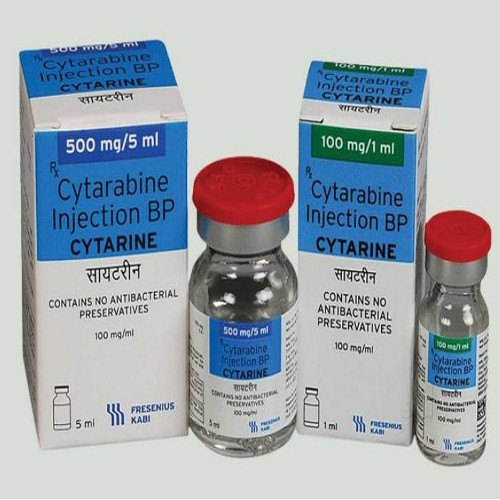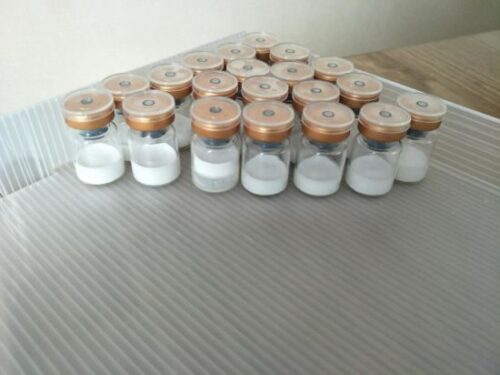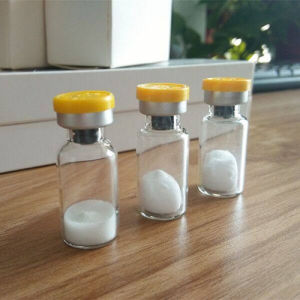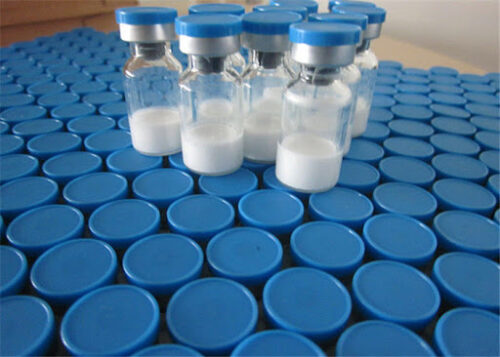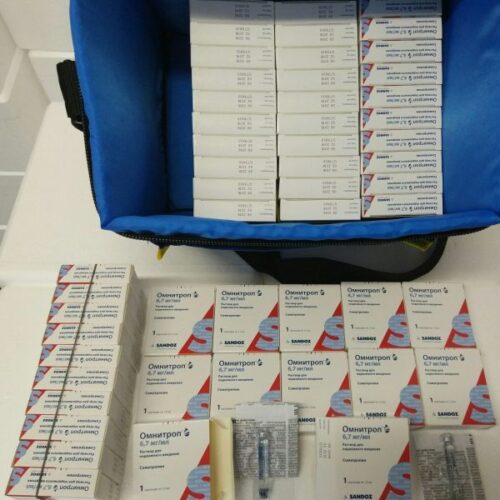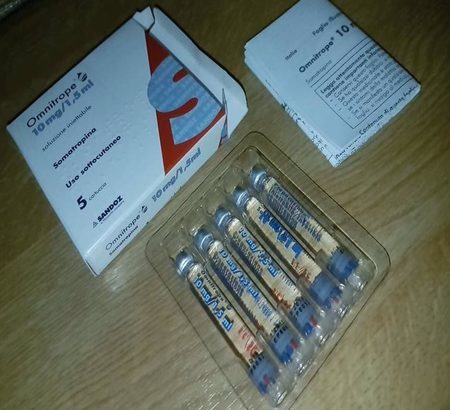
Cytarabine Vial injection
$100.00 – $150.00Price range: $100.00 through $150.00

Description
Description
Buy Cytarabine Online from Chemical Pharm Store.
Buy Cytarabine Online
Are you looking to you Cytarabine online?, also known as cytosine arabinoside (ara-C), is a chemotherapy medication used to treat acute myeloid leukemia (AML), acute lymphocytic leukemia (ALL), chronic myelogenous leukemia (CML), and non-Hodgkin’s lymphoma.
Best place to buy Cytarabine online/ Cytarabine for Injection USP, commonly known as ara-C, an antineoplastic for intravenous, intrathecal, or subcutaneous administration, contains sterile lyophilized cytarabine (1-β-D-Arabinofuranosylcytosine). Cytarabine is an odorless, white to off-white, crystalline powder which is freely soluble in water and slightly soluble in alcohol and in chloroform. Cytarabine is a synthetic nucleoside which differs from the normal nucleosides cytidine and deoxycytidine in that the sugar moiety is arabinose rather than ribose or deoxyribose. Its structural formula is:
Buy Cytarabine Online/ Order Cytarabine Wholesale /Retail Supplies Usage.
 |
C9H13N3O5………………M.W.=243.22Cytarabine for Injection USP is available in vials containing 100 mg, 500 mg, 1 g, and 2 g cytarabine. When necessary, the pH of Cytarabine for Injection USP was adjusted with hydrochloric acid and/or sodium hydroxide. Reconstitute with Bacteriostatic Water for Injection USP with benzyl alchohol for intravenous and subcutaneous use only. Do not use this diluent intrathecally. See “WARNINGS” Section.
For Consumers
What are the possible side effects of cytarabine (Cytosar-U, Tarabine PFS)?
Get emergency medical help if you have any of these signs of an allergic reaction: hives; difficult breathing; swelling of your face, lips, tongue, or throat.
Tell your caregivers at once if you have a serious side effect such as:
- fever with nausea, vomiting, and headache;
- problems with your vision or hearing;
- loss of movement in any part of your body;
- loss of bowel or bladder control;
- fever, chills, body aches, flu symptoms, sores in your mouth and throat;
- pale skin, feeling light-headed or short of breath, rapid…
INDICATIONS
Cytarabine in combination with other approved anticancer drugs is indicated for remission induction in acute non-lymphocytic leukemia of adults and children. It has also been found useful in the treatment of acute lymphocytic leukemia and the blast phase of chronic myelocytic leukemia. Intrathecal administration of cytarabine is indicated in the prophylaxis and treatment of meningeal leukemia.
DOSAGE AND ADMINISTRATION
Cytarabine is not active orally. The schedule and method of administration varies with the program of therapy to be used. Cytarabine may be given by intravenous infusion or injection, subcutaneously, or intrathecally. Thrombophlebitis has occurred at the site of drug injection or infusion in some patients, and rarely patients have noted pain and inflammation at subcutaneous injection sites. In most instances, however, the drug has been well-tolerated.
Patients can tolerate higher total doses when they receive the drug by rapid intravenous injection as compared with slow infusion. This phenomenon is related to the drug’s rapid inactivation and brief exposure of susceptible normal and neoplastic cells to significant levels after rapid injection. Normal and neoplastic cells seem to respond in somewhat parallel fashion to these different modes of administration and no clear-cut clinical advantage has been demonstrated for either.
High Quality Cytarabine Online History .
In the induction therapy of acute non-lymphocytic leukemia, the usual cytarabine dose in combination with other anticancer drugs is 100 mg/m2/day by continuous IV infusion (days 1 to 7) or 100 mg/m2 IV every 12 hours (days 1 to 7).
The literature should be consulted for the current recommendations for use in acute lymphocytic leukemia.
Intrathecal Use In Meningeal Leukemia: Cytarabine has been used intrathecally in acute leukemia in doses ranging from 5 to 75 mg/m2 of body surface area. The frequency of administration varied from once a day for 4 days to once every 4 days. The most frequently used dose was 30 mg/m2 every 4 days until cerebrospinal fluid findings were normal, followed by one additional treatment. The dosage schedule is usually governed by the type and severity of central nervous system manifestations and the response to previous therapy.
If used intrathecally, do not use a diluent containing benzyl alcohol. Many clinicians reconstitute with autologous spinal fluid or preservative-free 0.9% Sodium Chloride Injection USP and use immediately.
Cytarabine given intrathecally may cause systemic toxicity and careful monitoring of the hemopoietic system is indicated. Modification of other anti leukemia therapy may be necessary. Major toxicity is rare. The most frequently reported reactions after intrathecal administration were nausea, vomiting, and fever; these reactions are mild and self-limiting. Paraplegia has been reported. Necrotizing leukoencephalopathy occurred in five children; these patients had also been treated with intrathecal methotrexate and hydrocortisone, as well as by central nervous system radiation. Isolated neurotoxicity has been reported. Blindness occurred in two patients in remission whose treatment had consisted of combination systemic chemotherapy, prophylactic central nervous system radiation and intrathecal cytarabine.
When cytarabine is administered both intrathecally and intravenously within a few days, there is an increased risk of spinal cord toxicity, however, in serious life-threatening disease, concurrent use of intravenous and intrathecal cytarabine is left to the discretion of the treating physician.
Focal leukemic involvement of the central nervous system may not respond to intrathecal cytarabine and may better be treated with radiotherapy.
Buy cytarabine Online to be used to treat acute myeloid leukemia (AML)
The 100 mg vial may be reconstituted for intravenous and subcutaneous use with 5 mL Bacteriostatic Water for Injection USP with benzyl alcohol. The resulting solution contains 20 mg of cytarabine per mL. (Do not use Bacteriostatic Water for Injection USP with benzyl alcohol as a diluent for intrathecal use. See“WARNINGS” Section.)
The 500 mg vial may be reconstituted for intravenous and subcutaneous use with 10 mL Bacteriostatic Water for Injection USP with benzyl alcohol. The resulting solution contains 50 mg of cytarabine per mL. (Do not use Bacteriostatic Water for Injection USP with benzyl alcohol as a diluent for intrathecal use. See“WARNINGS” Section.)
The 1 g vial may be reconstituted for intravenous and subcutaneous use with 10 mL Bacteriostatic Water for Injection USP with benzyl alcohol. The resulting solution contains 100 mg of cytarabine per mL. (Do not use Bacteriostatic Water for Injection USP with benzyl alcohol as a diluent for intrathecal use. See“WARNINGS” Section.)
Buy cytarabine online It is given by injection into a vein, under the skin, or into the cerebrospinal fluid.
The 2 g vial may be reconstituted for intravenous and subcutaneous use with 20 mL Bacteriostatic Water for Injection USP with benzyl alcohol. The resulting solution contains 100 mg of cytarabine per mL. (Do not use Bacteriostatic Water for Injection USP with benzyl alcohol as a diluent for intrathecal use. See“WARNINGS” Section.)
If used intrathecally many clinicians reconstitute with preservative-free 0.9% Sodium Chloride Injection USP and use immediately.
The pH of the reconstituted solutions is about 5. Solutions reconstituted with Bacteriostatic Water for Injection USP with benzyl alcohol may be stored at controlled room temperature, 15° to 30°C (59° to 86°F), for 48 hours. Discard any solutions in which a slight haze develops.
Solutions reconstituted without a preservative should be used immediately.
NOTE: Parenteral drug products should be inspected visually for particulate matter and discoloration prior to administration, whenever solution and container permit.
Chemical Stability in Infusion Solutions: Chemical stability studies were performed by HPLC on cytarabine infusion solutions. These studies showed that when the reconstituted cytarabine was added to Water for Injection USP, 5% Dextrose Injection USP or 0.9% Sodium Chloride Injection USP, 93 to 99 percent of the cytarabine was present after 192 hours storage at room temperature. This chemical stability information in no way indicates that it would be acceptable practice to infuse a cytarabine admixture well after the preparation time. Good professional practice suggests that administration of compounded admixtures should be as soon after preparation as feasible.
Handling and Disposal: Procedures for proper handling and disposal of anti cancer drugs should be considered. Several guidelines on this subject have been published.1-7 There is no general agreement that all of the procedures recommended in the guidelines are necessary or appropriate.
HOW SUPPLIED
Cytarabine for Injection USP is supplied as follows:
NDC 55390-131-10…………………100 mg boxed vial; pack of 10
NDC 55390-132-10…………………500 mg boxed vial; pack of 10
NDC 55390-133-01…………………1 g boxed vial
NDC 55390-134-01…………………2 g boxed vial
Store at 25°C (77°F); excursions permitted to 15° to 30°C (59° to 86°F) [see USP Controlled Room Temperature].
Additional information
| Price | 100mg (1 ml vial, 1g (10 ml vial, 500mg 5 ml vial |
|---|
Related products
-
Hexapeptide-2 /5mg
$100.00Select options This product has multiple variants. The options may be chosen on the product page Details -
HGH Blue Top 100iu
$100.00Select options This product has multiple variants. The options may be chosen on the product page Details -
Omnitrope
$100.00Select options This product has multiple variants. The options may be chosen on the product page Details -
Viagra 50 mg tablets
$130.00 – $770.00Price range: $130.00 through $770.00Select options This product has multiple variants. The options may be chosen on the product page Details

